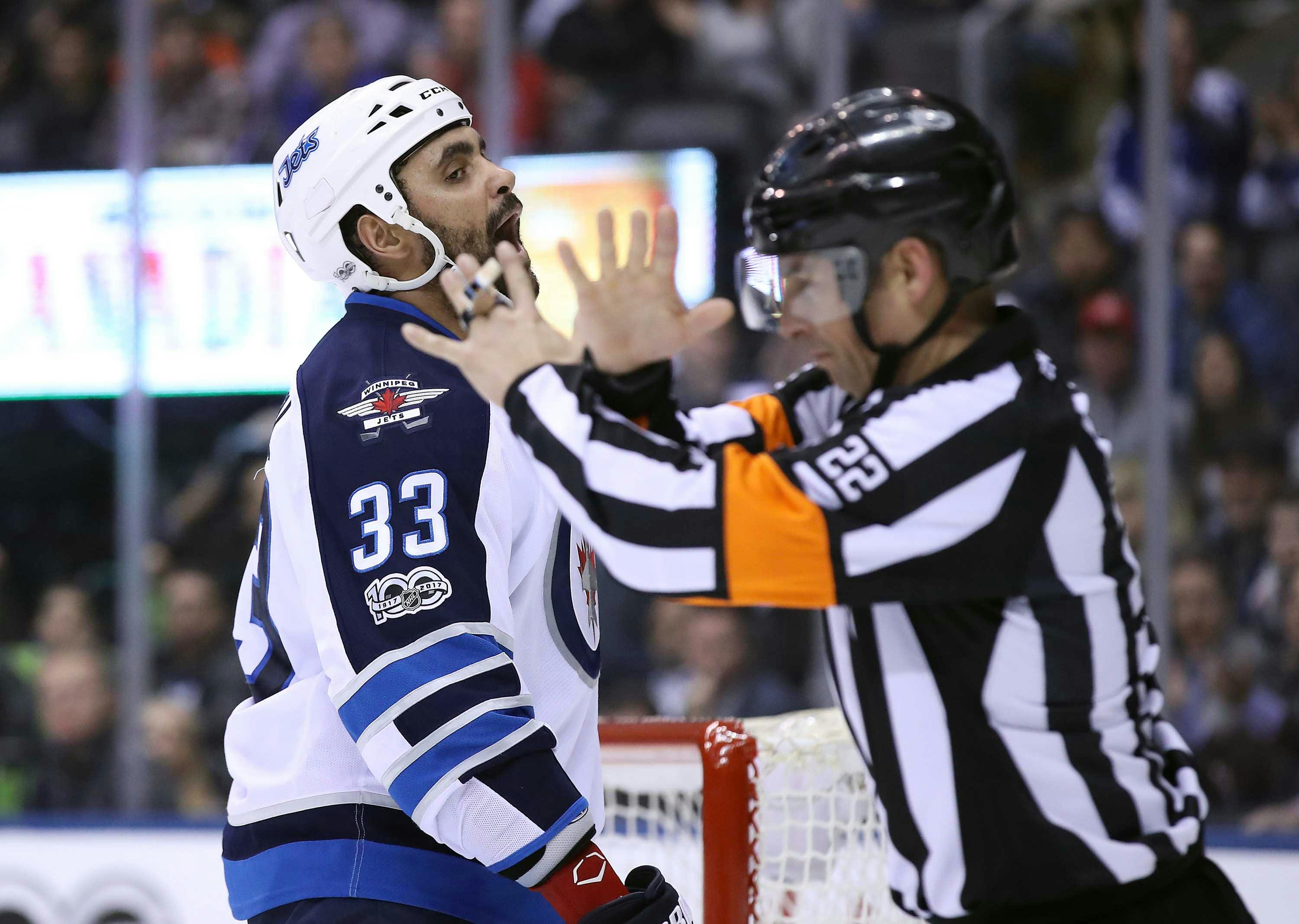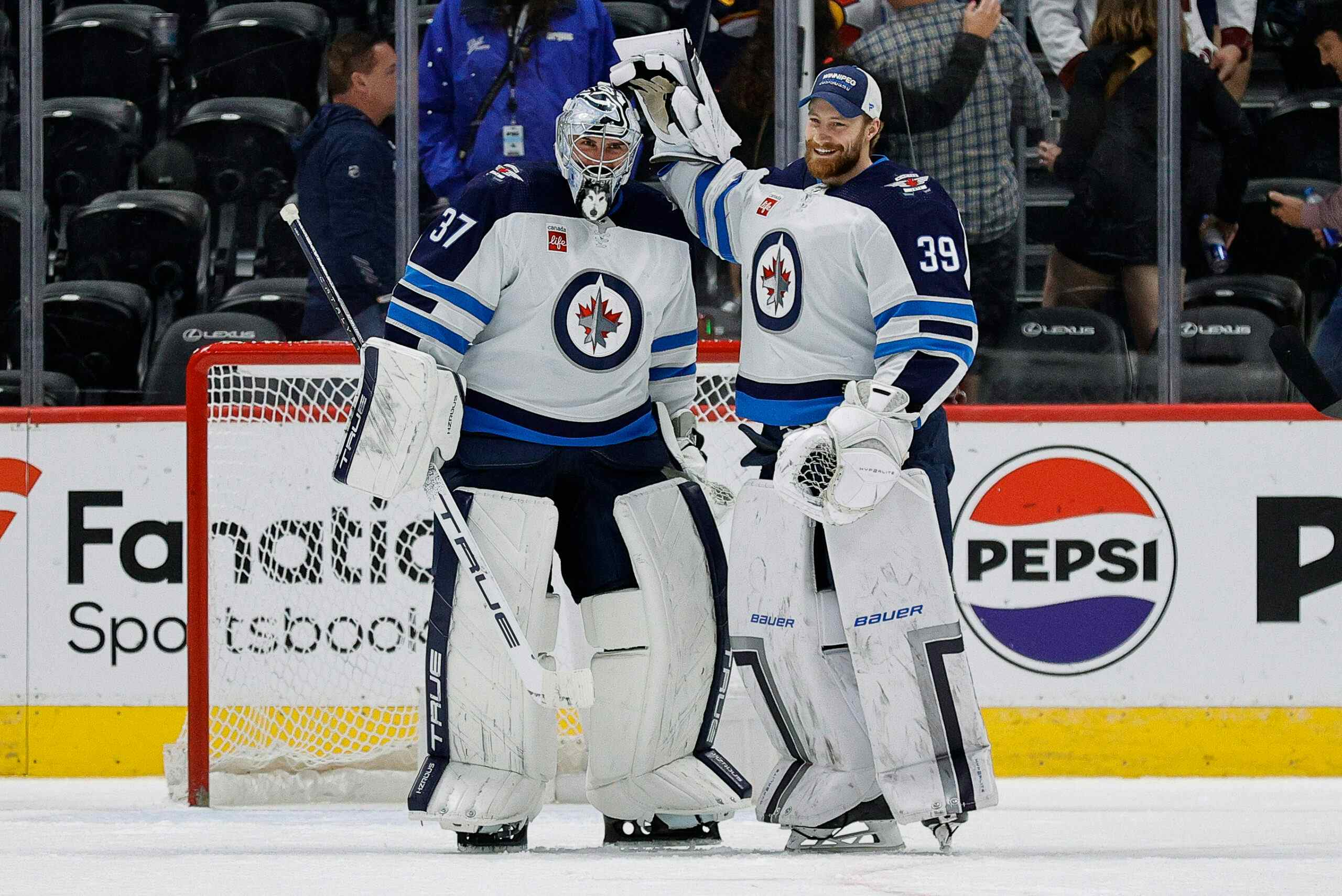“Undisciplined” – What Penalties Are the Jets Taking?

By WPGChief
6 years agoAs I somewhat subtly referred to in the addendum of my last article on Mason, fans and coaches alike are perturbed about the amount and type of penalties that the Winnipeg Jets take.
Wanting to look a bit more into this, I found it curious that it seems only ESPN tracks the type of penalties taken by each player, albeit that too is somewhat incomplete. Though I am not as experienced for getting into the “why” (“Why are the Winnipeg Jets taking so many damn penalties?”), I decided to look more into the “what” (“What penalties are the Winnipeg Jets taking so damn much?”).
Looking at the past three seasons worth of NHL Play-by-Play data, I decided to set flags as I collected data.
The first and what I thought was one of the most important was offsetting or coincidental penalties. Even if you are not a big fan of the game, you are bound to notice that the referee has simply chosen to send a player from each opposing team to the penalty box to “calm the game down” and the such. This means in the Play-by-Play data, there are countless number of offsetting “Roughing” or “Unsportsmanlike Conduct” penalties that are simply meant to establish referee control of the ice. Due to this, I flagged every penalty that did not change the teams playing at even strength (i.e. 5v5 > penalties occur > 5v5 anyways; or 5v5 > penalty + embellishment occurs > 4v4). While I remain able to count these penalties, I wanted to look at what caused the Jets to be playing shorthanded.
The two next flags that I set were whether a resulting power play or shorthanded goal was scored because of a certain penalty. Doing this would allow me to look at the sums for the entire season to see who was in the box when a goal was scored. For myself, it would allow me to look at ideas such as “Byfuglien can be so impactful on the power play that him being in the box often results in a goal because of poor shorthanded defence with out” or “Byfuglien is in the box so much that goals are just racking up because of him” or “Stuart being in the box is not actually as bad because he is not defending shorthanded instead”.
The last two flags that I attached to my totally, very fun large Excel spreadsheets (like I said, I’m still a relative newcomer to this hockey statistics craze and only have the tools I am familiar with) were the penalties taken while the Jets were on power play or penalty kill. With doing this as well, if a goal was scored 5v3, I would attribute half a goal to the two players in the box. If this also meant two goals were scored 5v3 then 5v4, one player would be responsible for 0.5 goals, and the other was hit for 1.5 goals. This happened only a couple of times, however, but this is to explain some .5’s you may see in the following.
Couple other things before we get into the numbers: I wanted to split the type of penalties into “types”, as in “stick”, “body”, or “other” infractions. A quick look at those types may tell us that the real reason the Jets are having penalty troubles. Is it because they are ‘careless’ with their sticks, or their physical play, or what-have-you. As well, for a bit more cleaner presentation, I shortened the names so something like “Delay Gm – Face-off Violation (2 min)” becomes “DOG-FO (2)”. Here is the Legend:

(The Legend of Penalties: A Type to the Call)
While there is a bit more work to be done to figure out in which situations the Jets are the worst at taking penalties (such as general time of the game, period, home or away, opponent, division, etc.), I wanted to present some of the early tallies from the Winnipeg Jets past three seasons and their apparent love with taking penalties:

(Winnipeg Jets Non-Offsetting/Coincidental Penalties taken from the 14/15, 15/16, and 16/17 seasons – Click for larger view)
To probably no one’s surprise, the almighty Buff leads the Winnipeg Jets in the past three years, taking 103 minor penalties that resulted in the team playing shorthanded. For those of you about to exclaim “Ugh, of course, it’s BIG Buff! He’s just so big, it’s probably all those penalties from him hitting people!”, I have a surprise for you: of Byfuglien’s 103 minors, 46 of them were from the “Body” type (in which Holding was 11 of them), and 50 of them were from the “Stick” infractions (in which Tripping was 19 of them).
In fact, it is more of a common trend than you might think, in that the Jets’ players suffer more from “Stick” penalties in comparison to “Body” penalties. For those with 10 or more minor penalties taken that resulted in the Jets playing shorthanded, the following players were the only ones to have “Body” be more than “Stick” (in order from most total penalties taken to least): Enstrom, Lowry, Thorburn, Myers, Morrissey, Pardy, and Kane. In a quick Excel calculation, for those who had more than 5 minor penalties, the Jets are averaging to be taking at least 5 more “Stick” penalties than “Body”.
Here are those numbers for all players:

Body-Stick +/- for the Winnipeg Jets (2014-17)
Now, let’s took at one of the flags I set earlier – goals scored when a Jet caused the team to be shorthanded:

(Sum of PP Goals Against for the past 3 seasons, tallied by penalty taker)
Let’s focus on the “PP Goal?” column for the time being. As I mentioned previously, this is a tally of goals scored when that player caused the penalty (so, they were in the penalty box). Somewhat unsurprisingly, four of the top five in this tally are defencemen. It makes somewhat intuitive sense – you want your defencemen out their to defend penalty kills, and when they’re not, that means you may have to put out fatigued defencemen – or whatever other excuse you can come up with. But when Byfuglien, Enstrom, Chiarot (!), Wheeler (!), and Myers are in the box, the Jets have given up more goals.
The “Rate” column is really nothing special – it is basically Minors divided by PP Goal?, so essentially what it says is that for every X number of penalties, the Jets will give up 1 goal. So, for every 6 Wheeler penalties, a goal is scored. For every 4.2 Byfuglien penalties, a goal is scored. And yes, what might seem crazy at first but is actually true, for every 35 Thorburn penalties, a goal is scored. It actually happened very recently too: the hi-sticking penalty in the first period at 2:14 in this 16/17 season against Edmonton’s Patrick Maroon was when the Jets finally gave up a goal when Thorburn was in the box for the last three years. The saying usually is that you help your penalty kill by not getting into the box, but that may actually be the opposite when it comes to Thorburn.
Closing Thoughts
So, what can we actually take out of this type of tallying? Well, for one, while being less physical will probably in fact reduce the number of penalties the Jets take, it is not those sort of undisciplined penalties that are really hurting them. It is penalties like cross-checking, hi-sticking, hooking, slashing, and tripping – the ones that are usually because the Jets are behind the play – those are what the Jets take more of.
While taking penalties may be something the team is plagued with so long as Paul Maurice is Head Coach and Dustin Byfuglien continues to skate around like a wrecking ball with an un-careful stick, every hockey team has to deal with penalties. It is up to the coaching staff and management to identify why and where these are happening and to limit the possibilities of it happening. It is of this author’s opinion that the best penalty kill is by not taking one in the first place – can and should the Jets continue their strong 5v5 play and reduce the number of penalties taken (and now with possibly gaining stronger than league average goaltending in net), the Jets could be a strong, disciplined team to play against in the Central Division.
Recent articles from WPGChief





